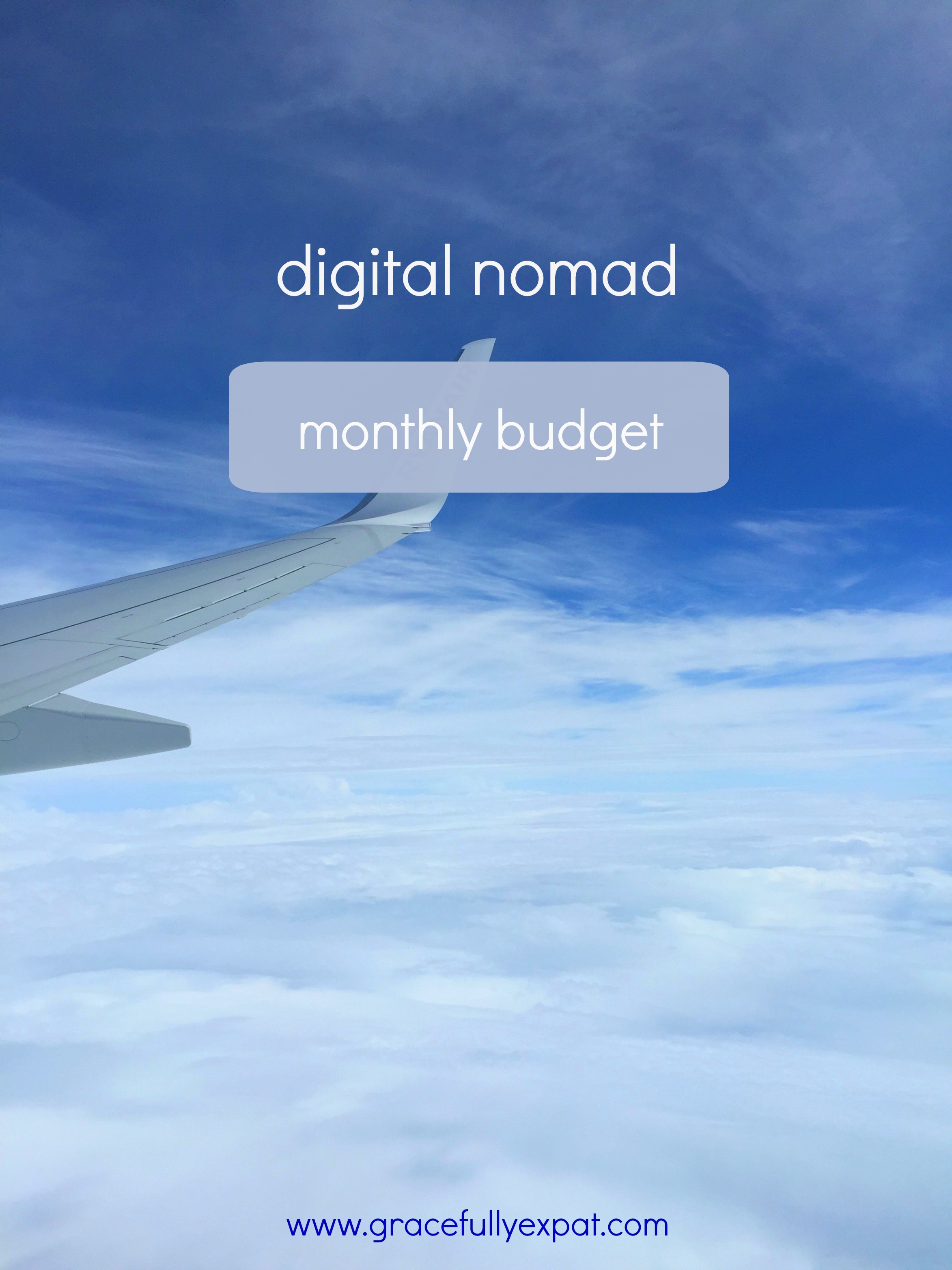While I’m still in Dublin, and still have my apartment here, I’ve been thinking ahead to my plan after I give it up and become more fully nomadic. Being something of a personal finance geek, and given that my income is now highly variable, the topic of my monthly budget has been top of mind. I have no intention of blowing through too much of my savings on this experiment/adventure. So I’ve been considering how to plan and forecast to ensure my financial goals are being met, as well as lifestyle ones.
I believe the digital nomad lifestyle can be even more affordable than living full time in many expensive cities, even when some of our untraditional costs may be higher than is typical in many budgets. So I’ve been planning, running some numbers, and researching the options. I like to keep things simple, so I’ve minimised the categories to the extent possible. But I think it’s still realistic and includes room for both the things I value, and for emergencies.

Monthly budget for digital nomad in Europe
| Budget for Europe nomad-ing: | € |
| Rent (including wifi/heat/electricity) | 650 |
| Food | 200 |
| Phone | 50 |
| Flights (yearly average) | 250 |
| Local transport | 50 |
| Entertainment (including Netflix & Spotify) | 50 |
| Insurance (World Nomads estimate for a year) | 50 |
| Yoga | 100 |
| Total | 1400 |
Process:
-
Determine the required line items
-
Research
-
Think both best case and worst case
Most of the line items on my budget are fairly obvious. I don’t have a lot of must-haves, and yet as I look at it, I see luxuries built in at every turn. The rent budget is sufficient to stay in Airbnb’s all to myself in many cities in Europe, when booked on a monthly basis. If I had to I could easily find cheaper accommodations. The food budget is has plenty of room in it even here in Dublin, and in many places in Europe food is much cheaper. Yoga is something I really love to do, and is important enough that I include it in the budget, even though it’s a total luxury. I could practice on my own, but I really love finding local studios to practice with a teacher and in a group setting. So that stays on the budget, knowing it could be cut if necessary.
My research has consisted primarily of checking Airbnb, sites like Expatistan, NomadList, Numbeo, and Teleport. I also monitor Google Flights and Skyscanner on a regular basis so I’m pretty comfortable with how much I’d spend on flights in a year.
However, the flight budget is a good example of what I mean by thinking both best-case and worst-case. If I go back to Vancouver twice a year, without any trips booked on points, and with trips at some of the more expensive times of year to fly, that could be €1,400 in flights on its own (worst case). That would leave €1,600 in the yearly budget for flights to and from everywhere else. With any flexibility and advance planning at all, I think that’s very doable, thanks to some of the low cost carriers operating in Europe. It’s important to me to be able to both go back to Vancouver regularly, as well as spend time in regularly Dublin, to be with my boyfriend. So in the best case, I might very well spend less than €200 in any given month. But if I spend €3,000 in a year, it won’t be a disaster.
Plan:
-
There’s never a “normal” month, in any budget
-
Lows will help offset highs
A universal truth in personal finance, regardless of whether we’re settled or nomadic, is that there’s no such thing as a normal month. The only true constants in my budget seem to be the cost of Netflix and Spotify. Everything else is in a constant state of flux, and it’s useful to be aware of that so the fluctuations aren’t perceived as stressful or unexpected. A good budget can and will flex and adapt to accommodate these perfectly normal, abnormal occurrences.
For example, I’m very much hoping that my housing costs may average out to be less than €650 per month. Some of the cities I’m eyeing up have really nice Airbnb offerings for closer to €500. But the trick then will be not to increase spending in other areas, because I see that extra “room” as being like built in insurance for unexpected increases in other areas, like if I’m somewhere that I need to take an expensive taxi, or if I need to replace any clothing.
Periodically assess:
-
-
Revisit plan vs. Actual on a regular basis
-
Adjust accordingly
-
Planning is nice (and I do mean that, although I do get that not everyone enjoys it as much as I do), but the reality can only be assessed in hindsight. That’s why I will go back and revisit the plan vs the actual spending on a regular basis. I think quarterly is the right frequency, as it’s not so granular that a single month could cause too much alarm, and yet it’s often enough to allow for course corrections throughout the year as needed. And, crucially, I’ll have to be open to adjusting based on those periodic assessments.
Starting out with a plan, as well as an expectation of variability and the need to be flexible and adaptable, seems like a balanced approach. If the plan is reasonable and within the boundaries we’re comfortable with, then we can move forward without fear or regret. And as always, rigidity is the enemy of frugality.
This budget accounts for yearly spending of €16,800. Depending on your perspective, that might be very lean indeed, or represent a princely sum. I think it’s enough to live well in many of the areas in Europe that I’m interested in right now. Stay tuned for my quarterly updates throughout 2018 to see how that looks in practice.








